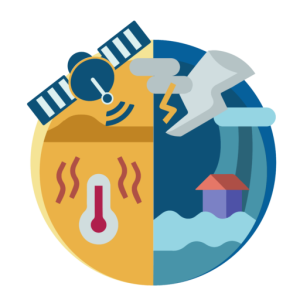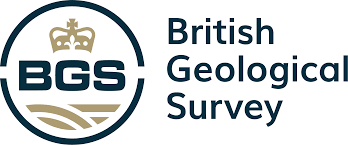About EO4MULTIHAZARDS
The European Space Agency’s (ESA) EO4MULTIHAZARDS (High-Impact Multi-Hazards Science) is a two-year project launched as part of the joint ESA-European Commission Earth System Science Initiative in September 2023.
At the core of EO4MULTIHAZARDS lies a joint effort to leverage the capabilities of satellite Earth Observation (EO) technology, such as including the Copernicus Sentinel series, the ESA’s Earth Explorers, and the meteorological missions, for the analysis of multi-hazard events. The objective is to better understand the intricacies of high-impact cascading and compounding multi-hazard events, unraveling their underlying drivers and dynamics, and enhancing our ability to assess their societal and ecological impacts.
The project encompasses the development of four distinct science cases, targeting both compound and cascading events. These science cases will serve as the foundation for corresponding demonstration cases, all with the shared objective of translating our scientific advancements into actionable insights. These outcomes are an integral part of a community tool designed to facilitate collaborative research and future scientific progress.
Scope and Objectives
EO4MULTIHAZARDS aims to use state-of-the-art satellite Earth Observation to improve the understanding of multi-hazard events and to address together with the derived vulnerabilities, and their societal impacts. This project is dedicated to advancing scientific understanding and modeling of multi-hazard events through collaboration with both local and international scientific initiatives.
The project main objective is to identify and address scientific needs concerning multi-hazard challenges by extending existing studies and engaging with a diverse scientific community to explore the potential role of Earth Observation in enhancing disaster risk assessment.
Four science cases will be designed to develop a deeper understanding of multi-hazard events, including compound events and their various interactions. The goal is to enhance the capability to evaluate exposure, risks, and vulnerabilities practically through the development of scientific knowledge in the defined science cases and demonstrating the impact of scientific progress in high-risk areas.
These science cases serve as foundations for the corresponding demonstration cases which will foster collaborations with end-users and practitioners to support timely actions in early warning systems. Collaboration with stakeholders and first responders is pivotal in endorsing early warning systems and facilitating timely responses to hazards.
Science Cases (SC) 1 and 2 investigate the effects of climate-related extreme events in the Adige River catchment, in Italy. SC1 focuses on hot/dry events on the Alpine mountainous region, where raising temperatures and lack of snowfalls cause hydrological impacts that compound with heatwaves and wildfires. SC2 evaluates the impact of climate-related extreme events on the middle-lower course of the river: data driven tools will be implemented to describe the interactions between climate-related hazards, coastal hazards such as sea level rise and saltwater intrusion, anthropogenic land use, and water quantity and quality parameters. SC3 is located in the Southeast region of the UK where the impacts of hot/dry compound in a scenario of sustained high temperatures and their effects on the stability of the terrain and geologically driven events will be evaluated. SC4 focuses on the small island developing State of Dominica to evaluate the multi-hazard scenario mainly from a wet compound and volcanic perspective (i.e., successive storms, landslides, volcanic hazards, and cross-border issues) using digital twins and advanced modelling.
A critical aspect of this initiative is the establishment of an Open Multi-Hazard Events Database adhering to Open Science standards. This platform will ensure reliable data for the scientific community and promote comprehensive research efforts on multi-hazard events.
Ultimately, EO4MULTIHAZARDS seeks to actively engage with and contribute to the European research community on multi-hazards by fostering collaboration among team members and stakeholders, and creating a community roadmap. The outcomes of the project will be disseminated through scientific peer-reviewed publications and public engagement materials accessible to a diverse audience.
The project main objective is to identify and address scientific needs concerning multi-hazard challenges by extending existing studies and engaging with a diverse scientific community to explore the potential role of Earth Observation in enhancing disaster risk assessment.
Four science cases will be designed to develop a deeper understanding of multi-hazard events, including compound events and their various interactions. The goal is to enhance the capability to evaluate exposure, risks, and vulnerabilities practically through the development of scientific knowledge in the defined science cases and demonstrating the impact of scientific progress in high-risk areas.
These science cases serve as foundations for the corresponding demonstration cases which will foster collaborations with end-users and practitioners to support timely actions in early warning systems. Collaboration with stakeholders and first responders is pivotal in endorsing early warning systems and facilitating timely responses to hazards.
Science Cases (SC) 1 and 2 investigate the effects of climate-related extreme events in the Adige River catchment, in Italy. SC1 focuses on hot/dry events on the Alpine mountainous region, where raising temperatures and lack of snowfalls cause hydrological impacts that compound with heatwaves and wildfires. SC2 evaluates the impact of climate-related extreme events on the middle-lower course of the river: data driven tools will be implemented to describe the interactions between climate-related hazards, coastal hazards such as sea level rise and saltwater intrusion, anthropogenic land use, and water quantity and quality parameters. SC3 is located in the Southeast region of the UK where the impacts of hot/dry compound in a scenario of sustained high temperatures and their effects on the stability of the terrain and geologically driven events will be evaluated. SC4 focuses on the small island developing State of Dominica to evaluate the multi-hazard scenario mainly from a wet compound and volcanic perspective (i.e., successive storms, landslides, volcanic hazards, and cross-border issues) using digital twins and advanced modelling.
A critical aspect of this initiative is the establishment of an Open Multi-Hazard Events Database adhering to Open Science standards. This platform will ensure reliable data for the scientific community and promote comprehensive research efforts on multi-hazard events.
Ultimately, EO4MULTIHAZARDS seeks to actively engage with and contribute to the European research community on multi-hazards by fostering collaboration among team members and stakeholders, and creating a community roadmap. The outcomes of the project will be disseminated through scientific peer-reviewed publications and public engagement materials accessible to a diverse audience.
Consortium
GMV (Spain): GMV Innovating Solutions (GMV) is a leading space technology company that specializes in developing innovative solutions for satellite navigation, Earth observation, and space mission control. The Remote Sensing and Geospatial Analytics (RSGA) divisionat GMV has a long standing reputation as supplier of EO systems and solutions, including i) EO-based added-value service design, implementation, validation and operationalizing, ii) Mature service provision experience; iii) Mature experience in requirement engineering and the complete process of design, concept, implementation, testing and operationalization of new products; iv) continuous R&D internal program to provide the team with novel capabilities.
BGS (UK): The British Geological Survey (BGS) is a world-leading geological survey and global geoscience organization, focused on public-good science for government and research to understand Earth and environmental processes. The Shallow Geohazards and Risks Team at BGS specializes in the study and assessment of various geological risks and hazards present in the shallow subsurface. Their work encompasses analyzing and understanding factors such as landslides, subsidence, coastal erosion, ground instabilities, and their potential impact on infrastructure and communities. Through field surveys, data analysis, and hazard mapping, the team aims to identify vulnerable areas and develop strategies to mitigate risks, offering crucial insights for urban planning, infrastructure development, and disaster risk reduction efforts.
CMCC (Italy): The Centro Euro-Mediterraneo sui Cambiamenti Climatici (CMCC) conducts research and analysis on the impact of climate change on natural hazards, focusing on understanding how climate variability influences the occurrence and intensity of events such as extreme weather phenomena, sea-level rise, and changes in hydrological cycles. Utilizing climate models and observational data, CMCC assesses the potential future evolution of these hazards due to climate change, providing crucial insights into their impacts on societies, economies, and the environment. Their work contributes to informing policymakers, stakeholders, and the public, aiding in the development of effective strategies to mitigate and adapt to the risks associated with natural hazards in the context of a changing climate.
EURAC (Italy): Eurac Research is a no-profit research centre based in Bozen-Bolzano (Italy). Our researchers come from all parts of the globe and a wide variety of scientific fields to address the most current and pressing societal challenges in mountain environments, such as the role of mountains as water towers, sustainable management of natural resources (agriculture, forestry, nature protection), risk management in the context of natural hazards and climate change. We integrate quantitative and qualitative analyses at various spatial and temporal scales in synergy with stakeholders and decision-makers consultations. By doing so, we aim at scrutinizing the resilience of populations and systems to potential external stressors and develop strategies for climate change adaptation.
UT-ITC (The Netherlands): The University of Twente’s Faculty of Geo-Information Science and Earth Observation (ITC) has been actively involved in multidisciplinary research concerning natural hazards, focusing on understanding, predicting, and mitigating the impact of various natural phenomena on society and the environment. Their research encompasses a range of natural hazards such as floods, earthquakes, landslides, and other geological and meteorological events. Utilizing a combination of engineering, geosciences, social sciences, and technology, the university likely examines the causes and effects of these hazards, aiming to develop innovative methods for hazard assessment, early warning systems, and resilient infrastructure designs. Their efforts involve collaborations between different departments and research groups, contributing to the development of strategies to reduce the vulnerability of communities and ecosystems to natural hazards, ultimately working towards enhancing resilience and sustainable development.
UCL (UK): The Institute for Risk and Disaster Reduction (IRDR) at University College London (UCL) is a multidisciplinary hub dedicated to understanding, mitigating, and addressing both natural and human-made hazards. Integrating expertise from diverse fields such as the natural sciences, social sciences, and engineering, the IRDR conducts interdisciplinary research and educational programs focused on comprehending the causes and impacts of various risks and disasters, while working collaboratively with governments, NGOs, and industry to create effective strategies and policies for risk reduction. Additionally, the institute emphasizes public engagement, aiming to raise awareness, enhance community resilience, and improve preparedness to minimize the impact of hazards on society and the environment.
VU (The Netherlands): The Department of Water and Climate Risk at Vrije Universiteit (VU) Amsterdam has been actively engaged in research related to natural hazards, encompassing various disciplines to understand and address the challenges posed by geological, meteorological, and environmental phenomena. Their research involves studying a spectrum of natural hazards such as floods, earthquakes, landslides, and other environmental risks. Utilizing a multidisciplinary approach drawing from geosciences, environmental studies, social sciences, and potentially engineering, the university likely focuses on investigating the causes, impacts, and mitigation strategies for these hazards. This involves focusing research efforts on hazard assessment, risk reduction, community resilience, and sustainable urban development. The university’s collaboration with research partners, local communities, and relevant stakeholders may contribute to developing innovative solutions and strategies aimed at reducing vulnerabilities and enhancing resilience in the face of natural hazards.








